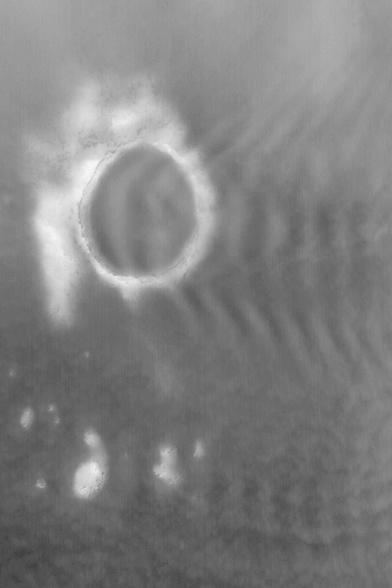Planet Mars | Diameter 67.4 km | |
 | ||
Eponym George K. Kunowsky, a German astronomer (1786-1846) | ||
Kunowsky Crater is a large crater in the Mare Acidalium quadrangle of Mars, located at 57.1° north latitude and 9.7° west longitude. It is 67.4 km in diameter and was named after George K. Kunowsky, a German astronomer (1786–1846). Because it lies on a large flat plain, Kunowsky is easy to spot on maps and pictures.
Impact craters generally have a rim with ejecta around them, in contrast volcanic craters usually do not have a rim or ejecta deposits. As craters get larger (greater than 10 km in diameter) they usually have a central peak. The peak is caused by a rebound of the crater floor following the impact. If one measures the diameter of a crater, the original depth can be estimated with various ratios. Because of this relationship, researchers have found that many Martian craters contain a great deal of material; much of it is believed to be ice deposited when the climate was different. Sometimes craters expose layers that were buried. Rocks from deep underground are tossed onto the surface. Hence, craters can show us what lies deep under the surface.
Why are Craters important?
The density of impact craters is used to determine the surface ages of Mars and other solar system bodies. The older the surface, the more craters present. Crater shapes can reveal the presence of ground ice.
The area around craters may be rich in minerals. On Mars, heat from the impact melts ice in the ground. Water from the melting ice dissolves minerals, and then deposits them in cracks or faults that were produced with the impact. This process, called hydrothermal alteration, is a major way in which ore deposits are produced. The area around Martian craters may be rich in useful ores for the future colonization of Mars.
